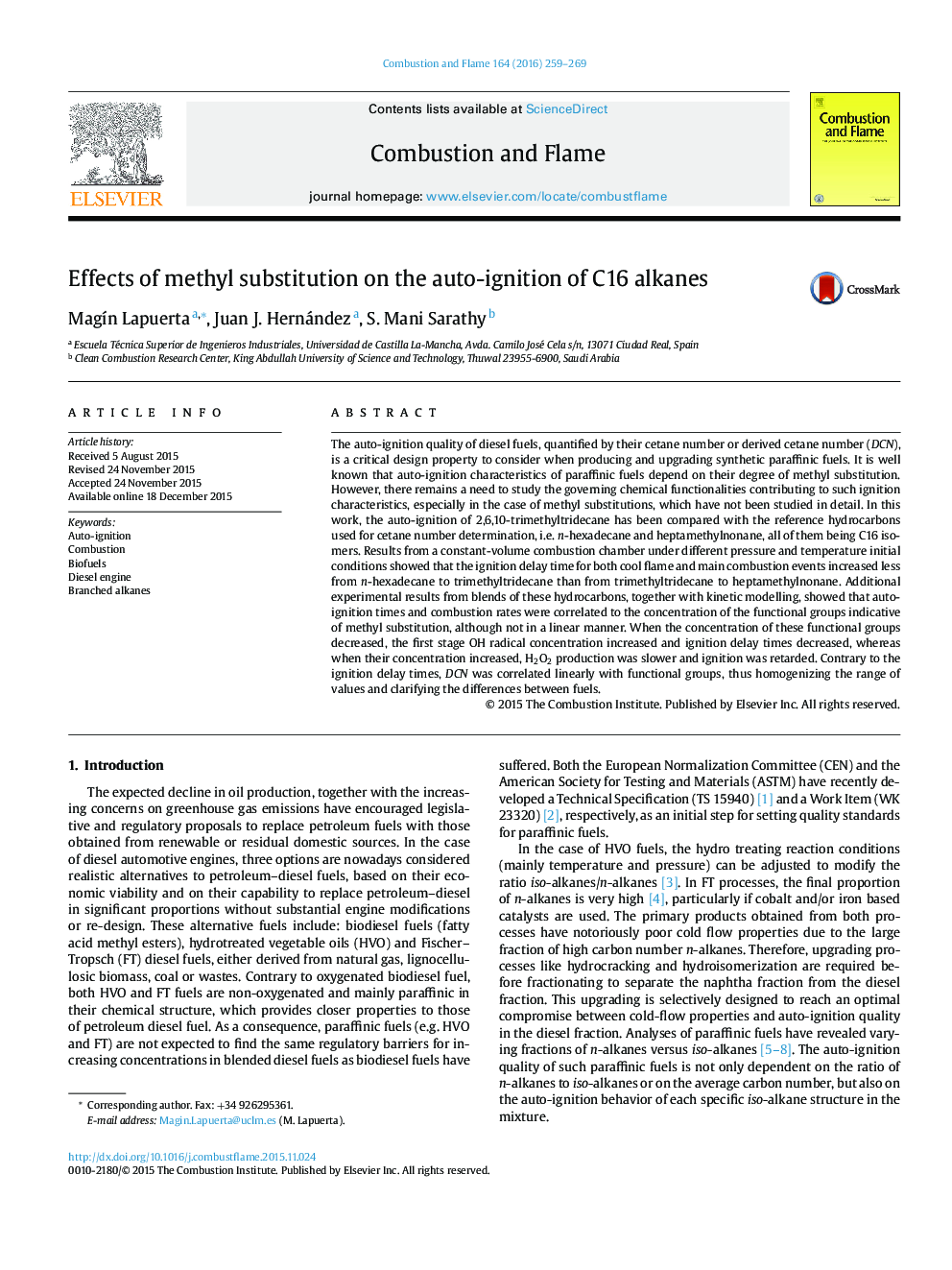| Article ID | Journal | Published Year | Pages | File Type |
|---|---|---|---|---|
| 6594308 | Combustion and Flame | 2016 | 11 Pages |
Abstract
The auto-ignition quality of diesel fuels, quantified by their cetane number or derived cetane number (DCN), is a critical design property to consider when producing and upgrading synthetic paraffinic fuels. It is well known that auto-ignition characteristics of paraffinic fuels depend on their degree of methyl substitution. However, there remains a need to study the governing chemical functionalities contributing to such ignition characteristics, especially in the case of methyl substitutions, which have not been studied in detail. In this work, the auto-ignition of 2,6,10-trimethyltridecane has been compared with the reference hydrocarbons used for cetane number determination, i.e. n-hexadecane and heptamethylnonane, all of them being C16 isomers. Results from a constant-volume combustion chamber under different pressure and temperature initial conditions showed that the ignition delay time for both cool flame and main combustion events increased less from n-hexadecane to trimethyltridecane than from trimethyltridecane to heptamethylnonane. Additional experimental results from blends of these hydrocarbons, together with kinetic modelling, showed that auto-ignition times and combustion rates were correlated to the concentration of the functional groups indicative of methyl substitution, although not in a linear manner. When the concentration of these functional groups decreased, the first stage OH radical concentration increased and ignition delay times decreased, whereas when their concentration increased, H2O2 production was slower and ignition was retarded. Contrary to the ignition delay times, DCN was correlated linearly with functional groups, thus homogenizing the range of values and clarifying the differences between fuels.
Related Topics
Physical Sciences and Engineering
Chemical Engineering
Chemical Engineering (General)
Authors
MagÃn Lapuerta, Juan J. Hernández, S. Mani Sarathy,
